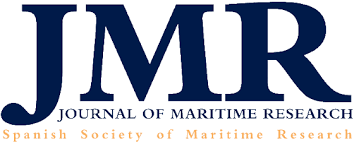MONITORING THE UTILIZATION OF THE VHF MARITIME MOBILE BAND IN THE NORTHERN ADRIATIC USING SOFTWARE-DEFINED RADIO SCANNER
DOI:
https://doi.org/10.5821/mt.12752Keywords:
maritime mobile service, very high frequency, software-defined radio, vessel traffic serviceAbstract
The Very High Frequency (VHF) maritime mobile band is regulated by the Appendix 18 of the International Telecommunication Union (ITU) Radio Regulations, which contains a list of channels and their designated frequencies. Shipboard VHF stations shall at least maintain a proper radio watch on the VHF channel 70 for Digital Selective Calling (DSC) purposes and on the radiotelephone VHF channel 16 for distress, urgency and safety communications, as well as for routine calling. In addition to the mentioned channels, the ships should also keep watch on the channels allocated for the reception of various information important to the safety of navigation, depending on the national rules valid in different navigational areas. In order to be able to maintain watch on all the mentioned channels simultaneously, it is necessary to have a suitable receiver(s). Considering all the above, this paper provides an analysis of the use of a low-budget Software-Defined Radio (SDR) receiver for monitoring all transmitting frequencies in the VHF maritime mobile band, from a fixed location in the northern Adriatic. The results of the analysis show the frequency of (non)use of the VHF maritime mobile band in the line of sight of the fixed maritime VHF antenna, with special reference to the channels assigned to the Croatian Vessel Traffic Service (VTS Croatia). The above analysis can serve to consider the possibility of using small low-budget SDR devices in maritime communications in general.













